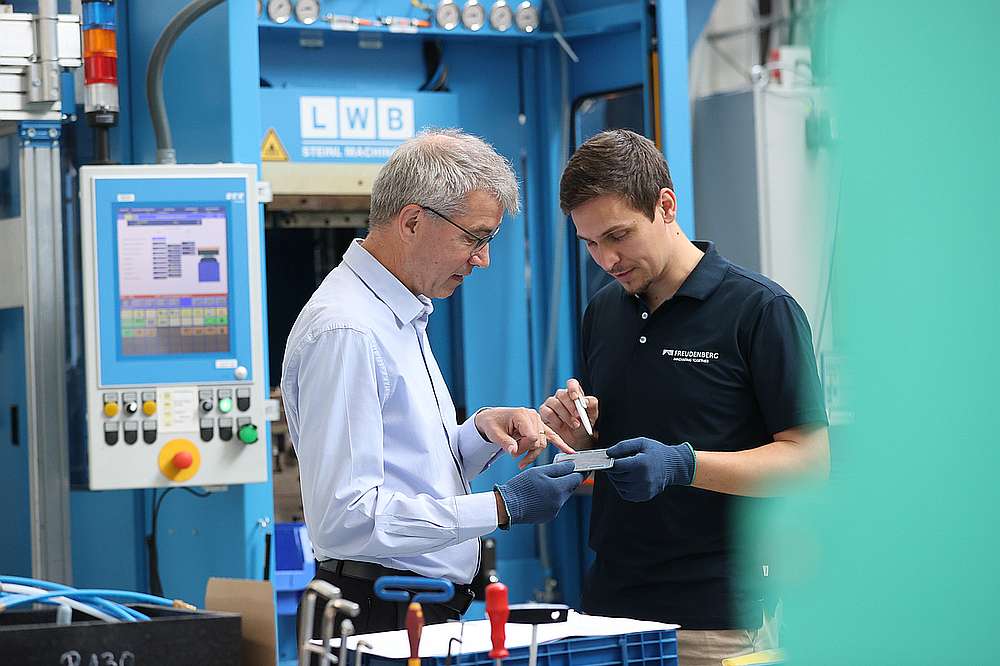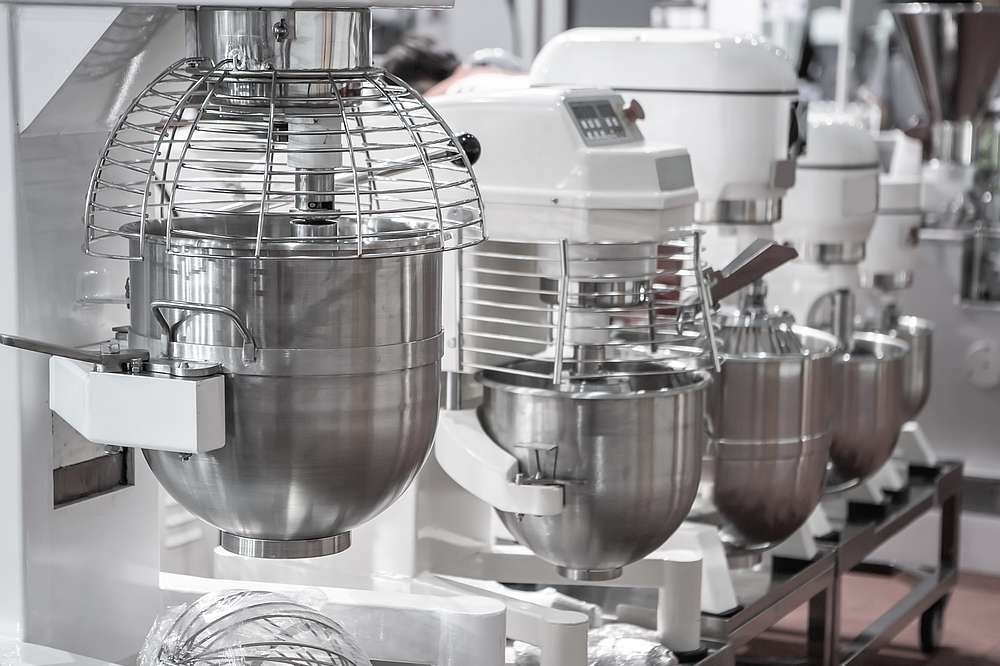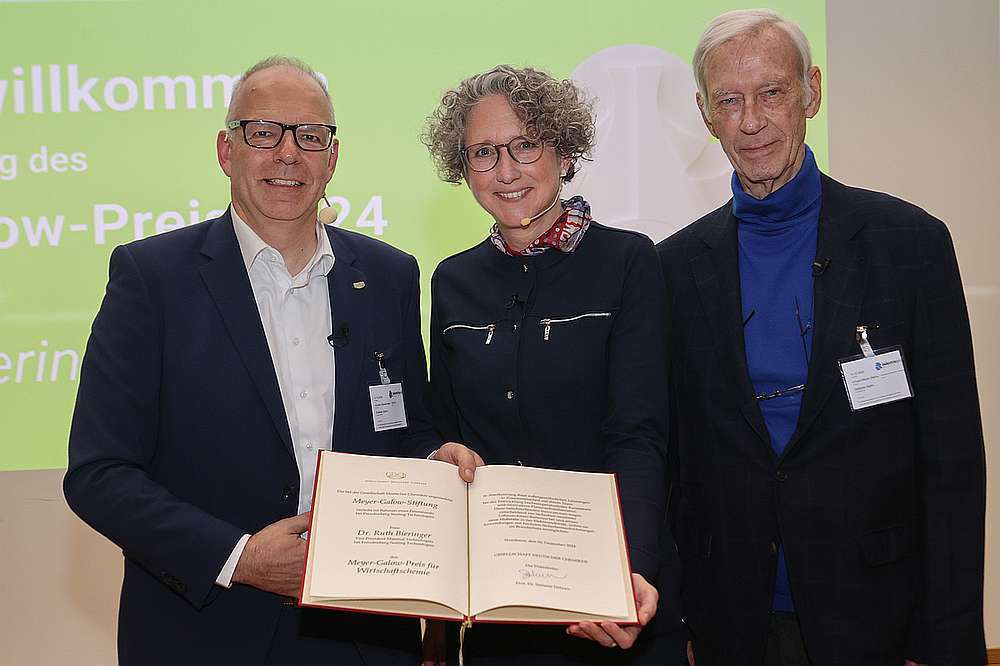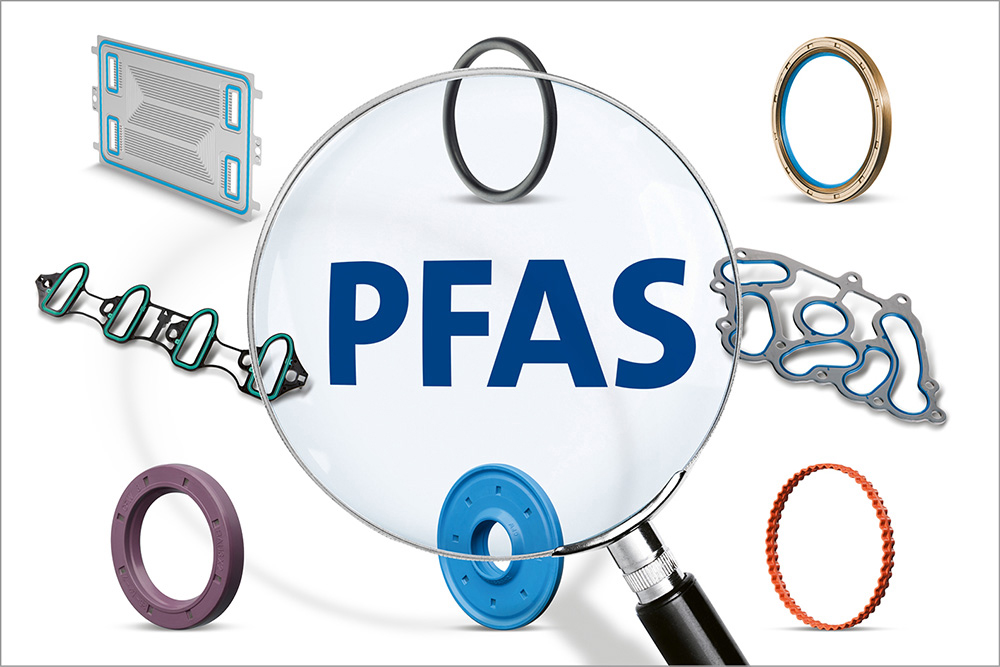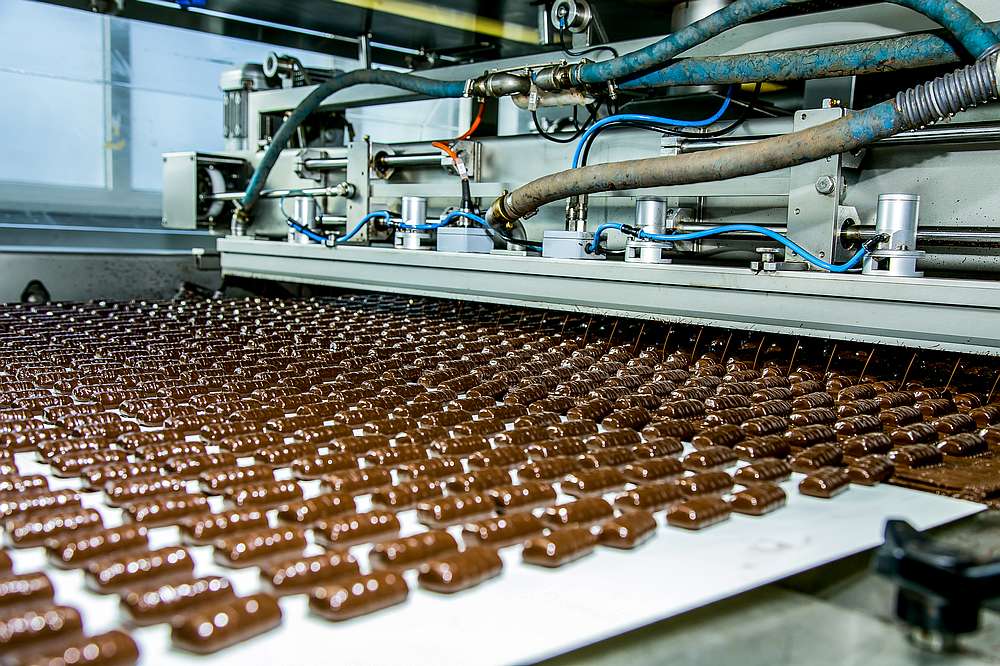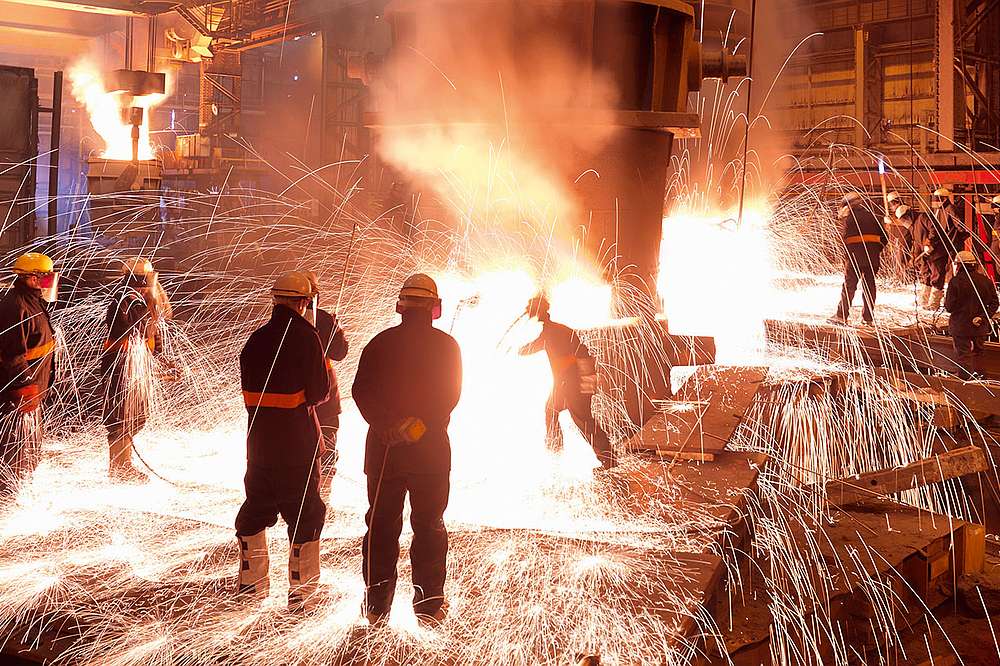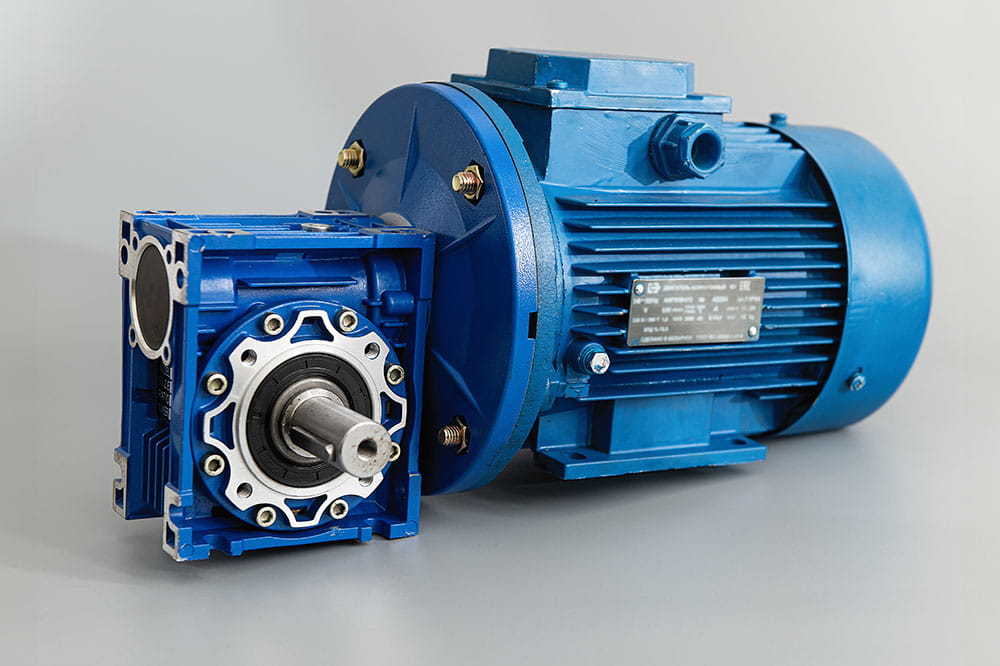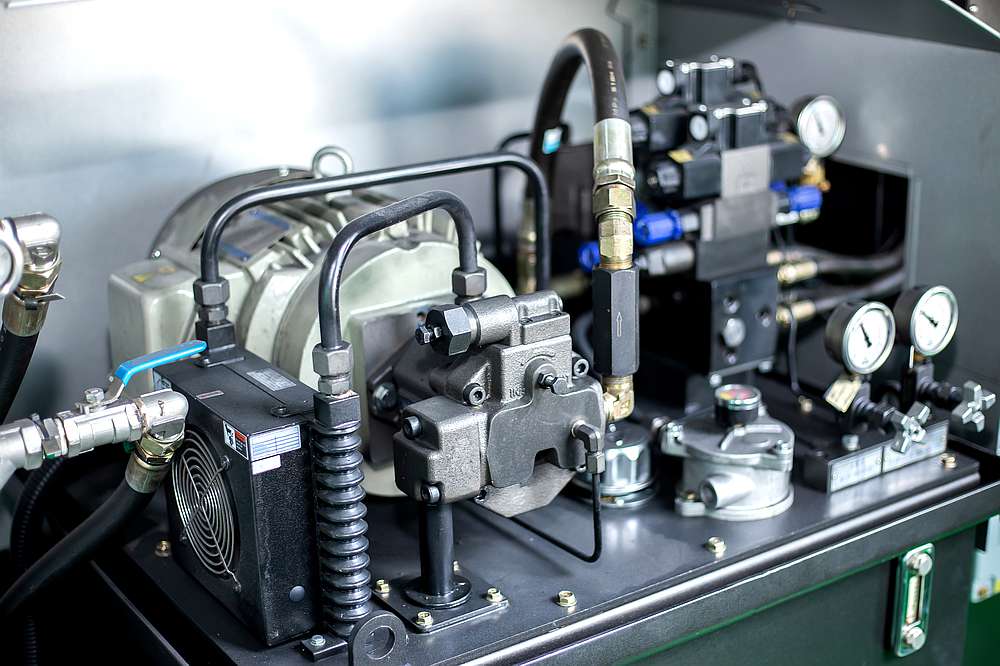Obtain news and background information about sealing technology, get in touch with innovative products – subscribe to the free e-mail newsletter.
24.10.2017
Two Are Better Than One
Hydraulic applications put extreme demands on sealing systems. For one thing, they must prevent the escape of hydraulic fluid. Since the fluid is maintained under high system pressure, highly flexible and elastic materials are offered for the seal lip. Those materials – in a hydraulic cylinder, for example – are positioned optimally against the rod. For another, the sealing elements must not be forced into the so-called extrusion gap, which, as the design requires, is present between the rod and the housing to allow the rod’s movement. Quite hard materials with high rigidity are suited for this role.
Rotating hydraulic seals are used in rotary feedthroughs in machinery that does not rotate continually but rather executes rotating and swiveling motions. The rotating claws of tree harvesting machines in the forestry industry are one example, as are the rotatable superstructures of hydraulically powered crawler excavators. Here the rotary feedthrough facilitates the hydraulic fluid’s sealed transit between the fixed and the rotating bodies under high pressure. Earlier systems have consisted of an O-ring, a square ring or an X-ring, which handled the sealing function toward the housing as a static contact element, and a slide ring, at which the shaft glides along in its rotational movement and which – under the pressure of the hydraulic fluid – creates a sealing effect.
Until now, to solve these conflicting objectives, seals consisting of two elements have been used – with the disadvantage that they move toward one another, and the hard element can “eat away” at the soft material portion. For several years, Freudenberg Sealing Technologies has manufactured rod seals consisting of just one element made from two different polyurethanes. The lip material is optimized for the highly dynamic sealing action, and the part of the material at the opposite, pressure side is geared to the greatest possible distortion resistance. The company is now doing research on processes in which polyurethanes can be bonded to high-performance plastics. Such combinations can withstand even greater loads and exhibit significantly longer lifespans.
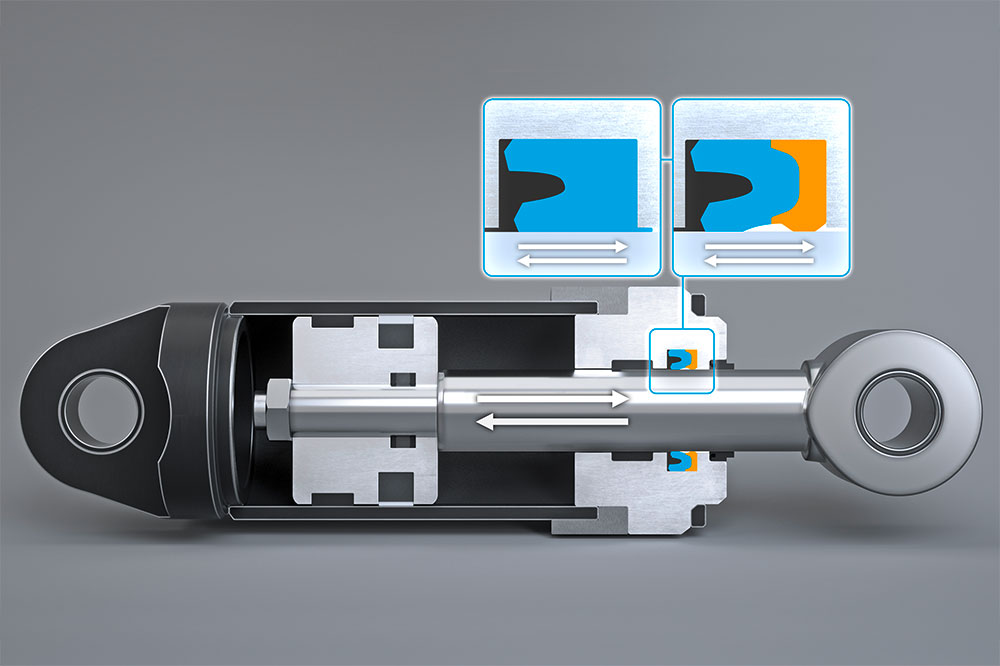
But in a sealing system made of two elements, there is the danger that the slide ring might be carried along with the shaft. The two sealing elements would then move in relation to one another and could thus be exposed to increased wear. The higher the stresses from the pressure and the temperatures in the hydraulic system, the greater the danger. Freudenberg wants to solve this problem with the new firmly joined two-component seals made of polyurethanes and high-performance plastics. Since the individual material components of the rotational seals no longer rub against one another, the seals can be used with an expanded power spectrum and thus in a broader range of applications.
In the development of its new rotating seals, Freudenberg Sealing Technologies benefits from the experience that the company has had with two-component rod seals for hydraulic cylinders. The requirements on the sealing system are similar, but in those cases, the seals must withstand linear movement, not rotation, because the rod in the hydraulic cylinder moves back and forth. In the production of the two-component seals, the polyurethanes with different degrees of hardness are bonded to one another in an injection molding process. The bond benefits from the fact that the individual components come from the same material family. One challenge that the developers of the new rotating seals are facing is transferring the process to two-component seals that combine substances from different material families.
For the manufacturers of hydraulic cylinders, the main advantage of the current two-component rod seals is that they allow greater tolerances in the design of pistons and rods. The seals exhibit greater strength with regard to the extrusion gap. As a result, it can be made larger than it would be in conventional sealing systems. The sealing ring can be mounted more easily because the material combination can be optimized to this end. Freudenberg Sealing Technologies now wants to develop this design flexibility for the manufacturers of applications that are equipped with rotary feedthroughs.
Ulrike Reich
Head of Media Relations & Internal Communications
Telephone: + 49 (0) 6201 960 5713
ulrike.reich@fst.com chevron_rightDownload Documents
Download Images
News Service
You can subscribe to the Freudenberg Sealing Technologies news alert service, bringing you the news as soon as they are published. You can always unsubscribe from this service.
Subscribe now! chevron_rightFurther Articles With These Taggings

First Hand News
Best of all, keep up with the latest developments
with the Freudenberg Sealing Technologies newsletter.

